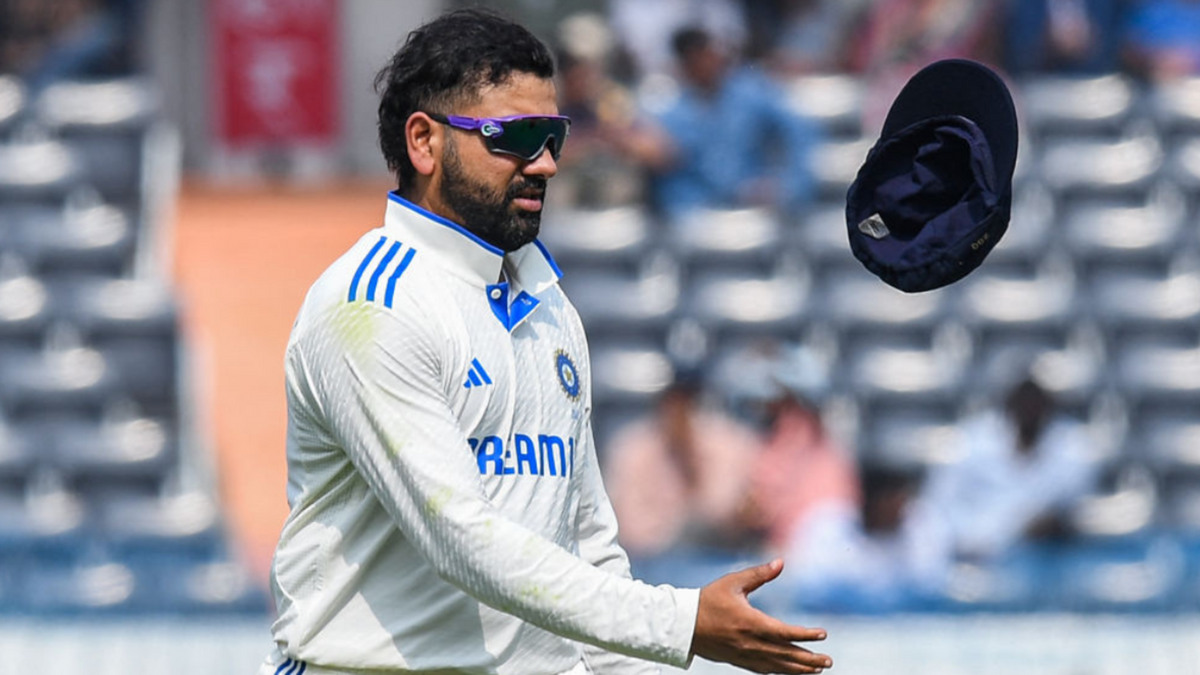
From taking a 190-run first-innings lead to losing by 28 runs, India slipped up dramatically to concede the first Test to England. Aadya Sharma, present at the venue, lists down the things that went wrong for them.
Home Test defeats don’t come by often for India, but when they do, they sting. The Hyderabad loss will rankle even more, given how comfortable a position India were in, and how systematically the lead was snatched from them.
Losing the advantage
India unravelled in the second innings, but it was partly to do with them not maximising their lead in the first. From 421-7 at the end of day two, India lost both overnight batters Ravindra Jadeja and Axar Patel quickly, folding for 436. And earlier, when the conditions were better to bat, the batters did not capitalise on their starts. Eight of the top nine made it to 20 but only three made it to 50, and no one made past the 80s.
It seemingly did not matter as much at that time, but when Ollie Pope brought out an all-time masterclass and the tail was left huffing and puffing to squeeze through their chase of 231, the missed opportunities of day two and three came back to haunt.
“In some ways, we left those 70-80 runs back in the first innings,” Rahul Dravid said after the game. “Second innings was always going to be challenging”.
More risk, more reward?
Ollie Pope’s use of the sweep and reverse sweep as well as the cross-batted shots on the square were the highlight of England’s innings. He threw repeated challenges at India’s spinners, forcing them to alter their lengths. Barring Yashasvi Jaiswal, India did not do the same in the first innings: the batters did not unsettle the visitors by attempting to score off decent balls – an aspect Dravid lamented later. And when they did attack, they went aerial – in contrast to Pope, who didn’t hit a six in his innings – and often holed out.
In the second innings, they allowed Tom Hartley to get into rhythm, and on a pitch that turned and often kept low, trusted their forward defence to the point of death. After the game, Pope said that playing the sweep and the reverse is as safe as a defence in India. A clear difference in mentality.
Not challenging Pope enough
That Pope put together an unforgettable innings cannot be commended enough, but didn’t mind some help that India happily offered. The field settings were unimaginative, allowing Pope to play with a clear head. He later said: “If we can play reverse sweeps to their best balls, that will lead to more short balls and half-volleys to score off”.
As has happened before – Travis Head in the WTC final, or Dean Elgar in the Boxing Day Test – Rohit Sharma’s captaincy tends to fall flat when batters are settled. When Ben Foakes was dismissed, the pressure should have been back on Pope to bat with the tail, but he let him go easy, operating with no close-in fielders, and three in the deep. From that point, Pope and Rehan Ahmed managed to extend the lead.
"It's the sort of innings that is in the same breath, you'd say, as Pietersen at Mumbai." 🔥@Yas_Wisden on Ollie Pope's stunning 148* in Hyderabad and why it's the perfect example of what Bazball is all about.#INDvENG pic.twitter.com/bkC5InSW00
— Wisden (@WisdenCricket) January 27, 2024
Even against his reverse sweeps, Rohit had few answers – he was repeatedly able to bisect the gap between deep backward point and short third man (credit to his skill), but there were no obvious efforts to plug that gap.
His use of Mohammed Siraj can also be questioned: with Jasprit Bumrah breathing fire from one end on day three, there was merit in pressing Siraj – forever a confidence bowler – to get into rhythm. And yet, he was used only for short bursts that didn’t mean much, getting a total of 11 overs in the game. Even the belated entry of Bumrah on day four can be debated.
Sloppy in the field
When India did get a chance, they scuppered it. One of the rare instances when Pope’s reverse sweep did not work, and the ball ballooned towards short third man, Axar Patel made a meal of an easy offering. Later, on 186, Pope was let off by a KL Rahul drop. On either side of those two gaffes, England took the game away from India.
The ground fielding was also sloppy: more than once, R Ashwin messed up his attempt to save a boundary, and there were overthrows too. Add to that, there were as many as six no-balls in the innings, all by Jadeja.
In contrast, England were a lot more tuned in (barring a couple of non-sightings of the ball) – underlined by Ben Stokes’ brilliant, arguably match-turning run out of Jadeja.
2017 ⏩ 2021 ⏩ 2023 ⏩ 2024
India have lost only four Tests at home since 2013.#RohitSharma #ViratKohli #India #Cricket #Tests pic.twitter.com/PhwLBgxqCy
— Wisden India (@WisdenIndia) January 28, 2024
What next?
In all, England looked well prepared, did not shy away from bringing out the unconventional, backed their players to the hilt, and came out with a result to remember.
For India, their proud home record is beginning to show cracks. The hesitance in playing braver cricket could be stemming from the prestige to maintain that record at home, and the inability to clinch crucial moments should serve as a wake-up call. They might have been favourites after the first three days, but England showed them just how Test cricket can be a game of sessions.
Neither team was perfect, and both will learn from their errors – the series is going to be an enthralling one.








